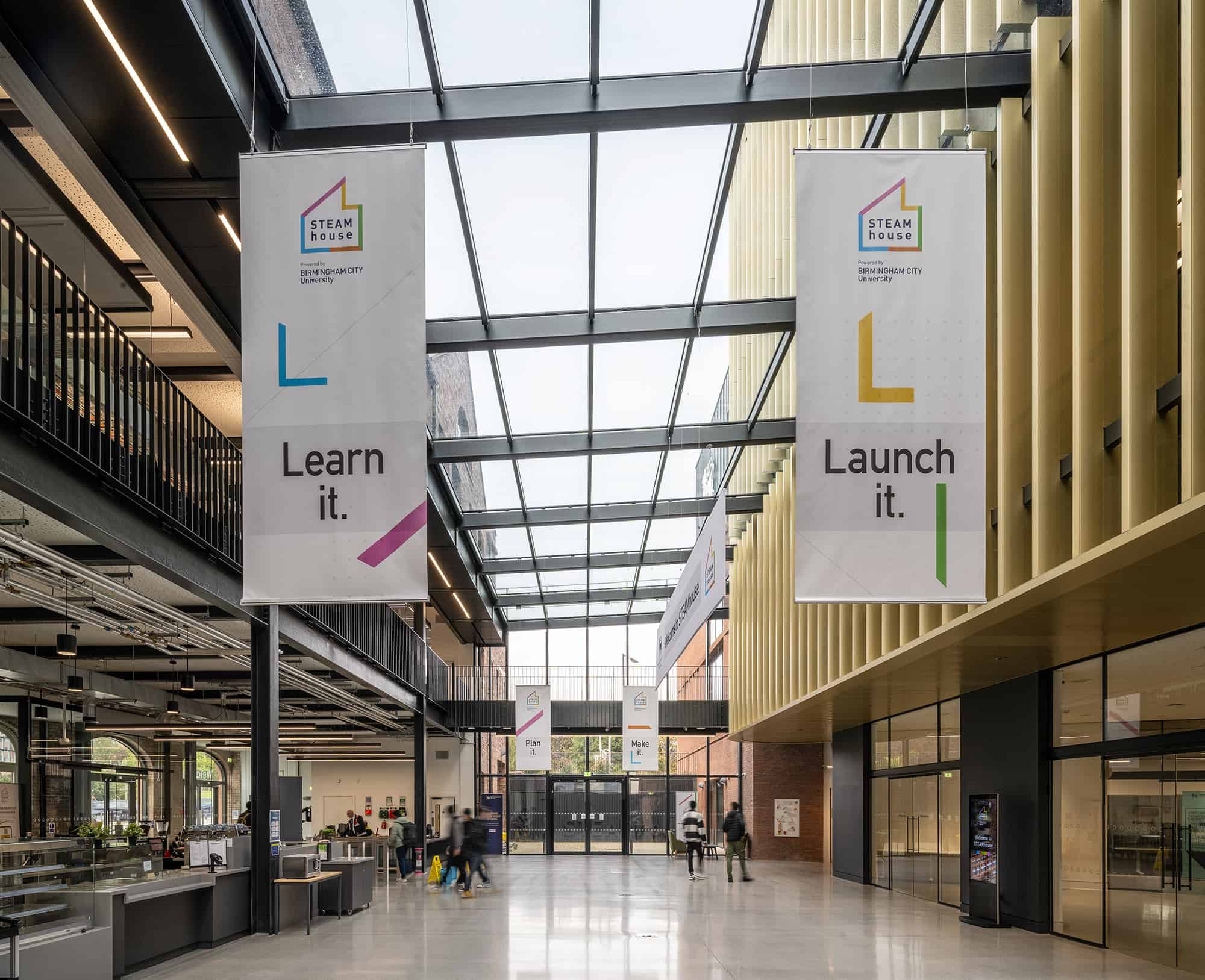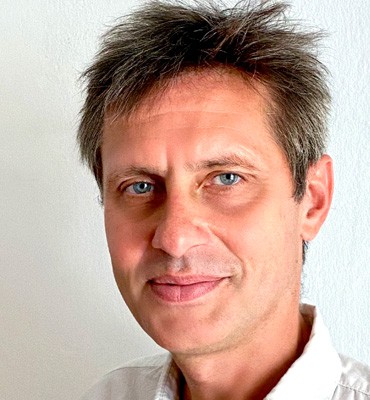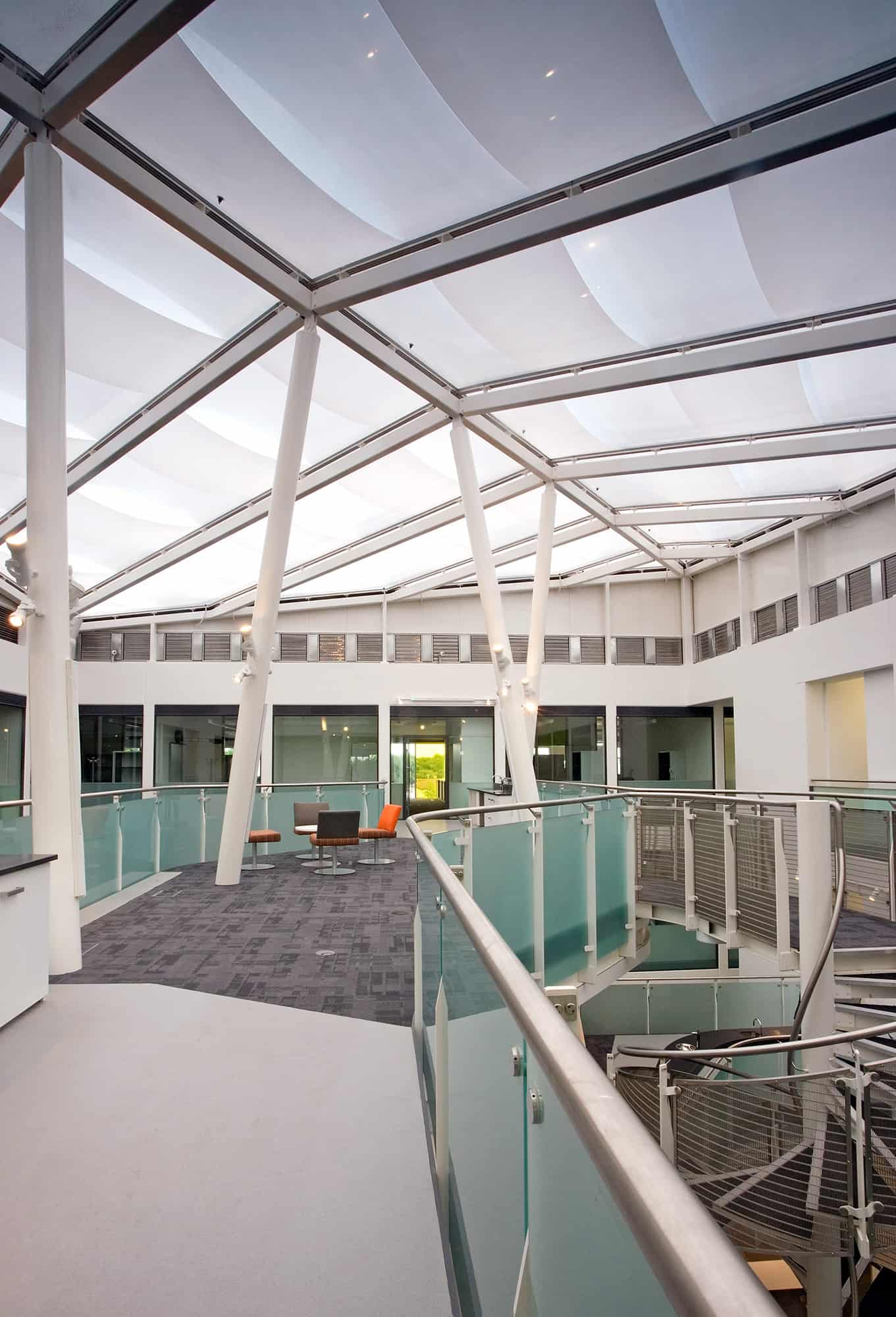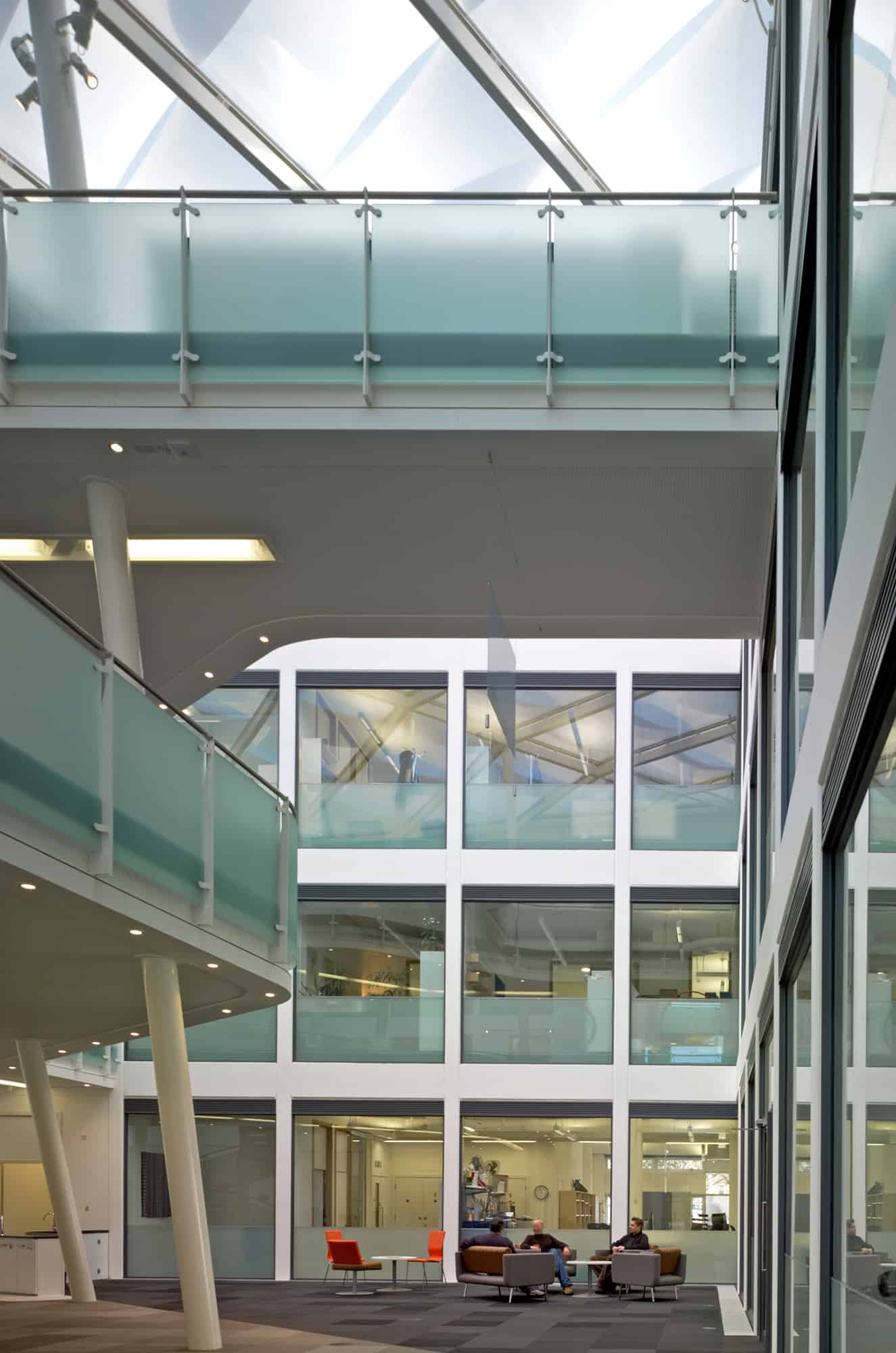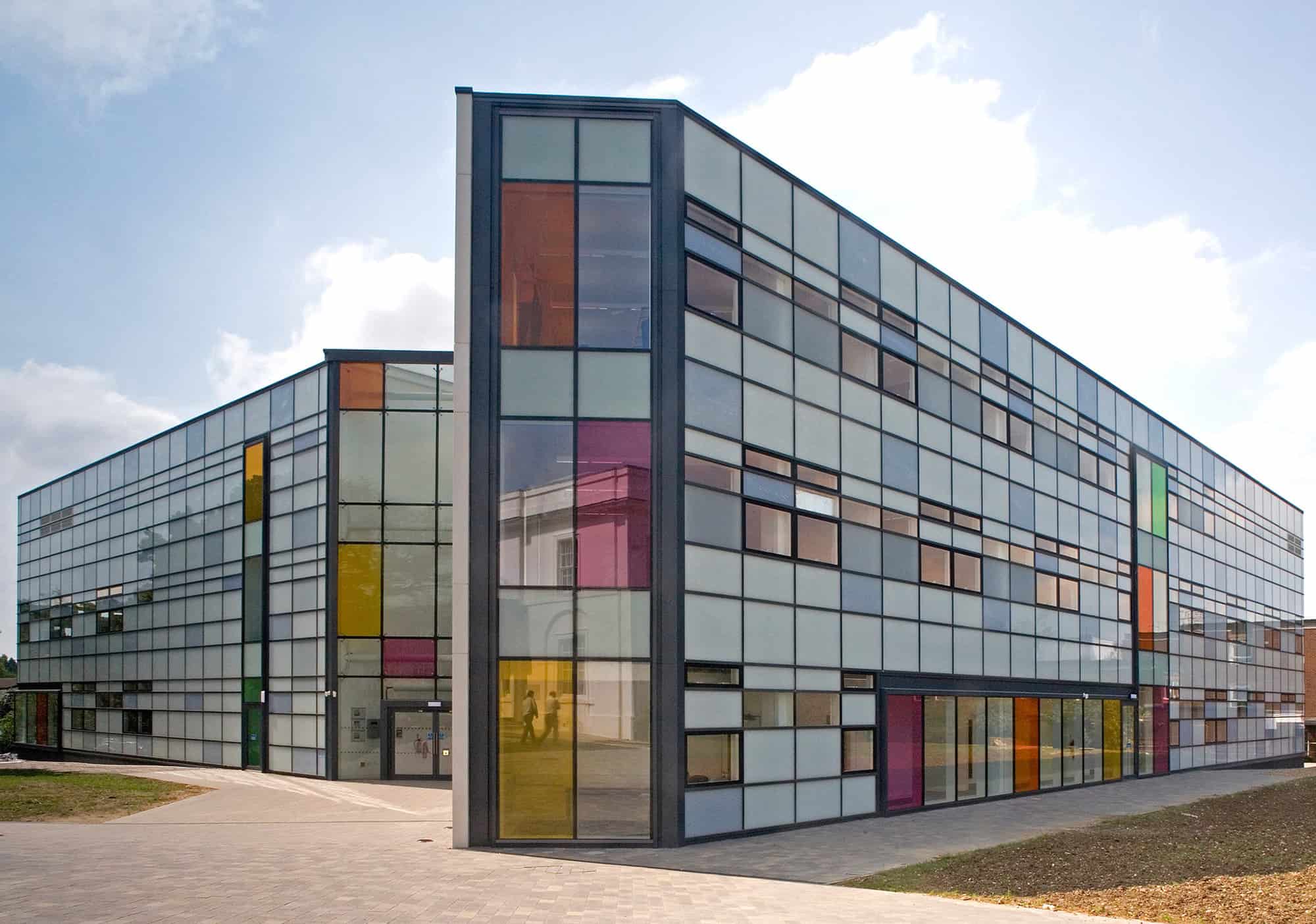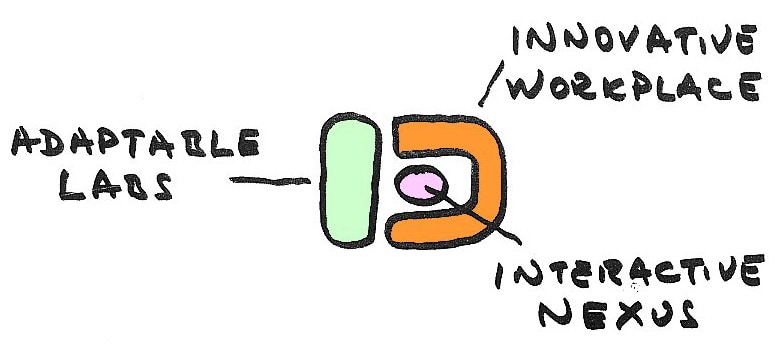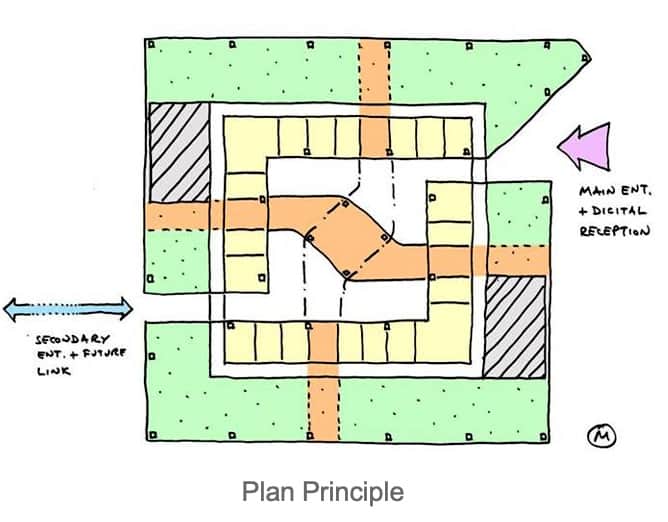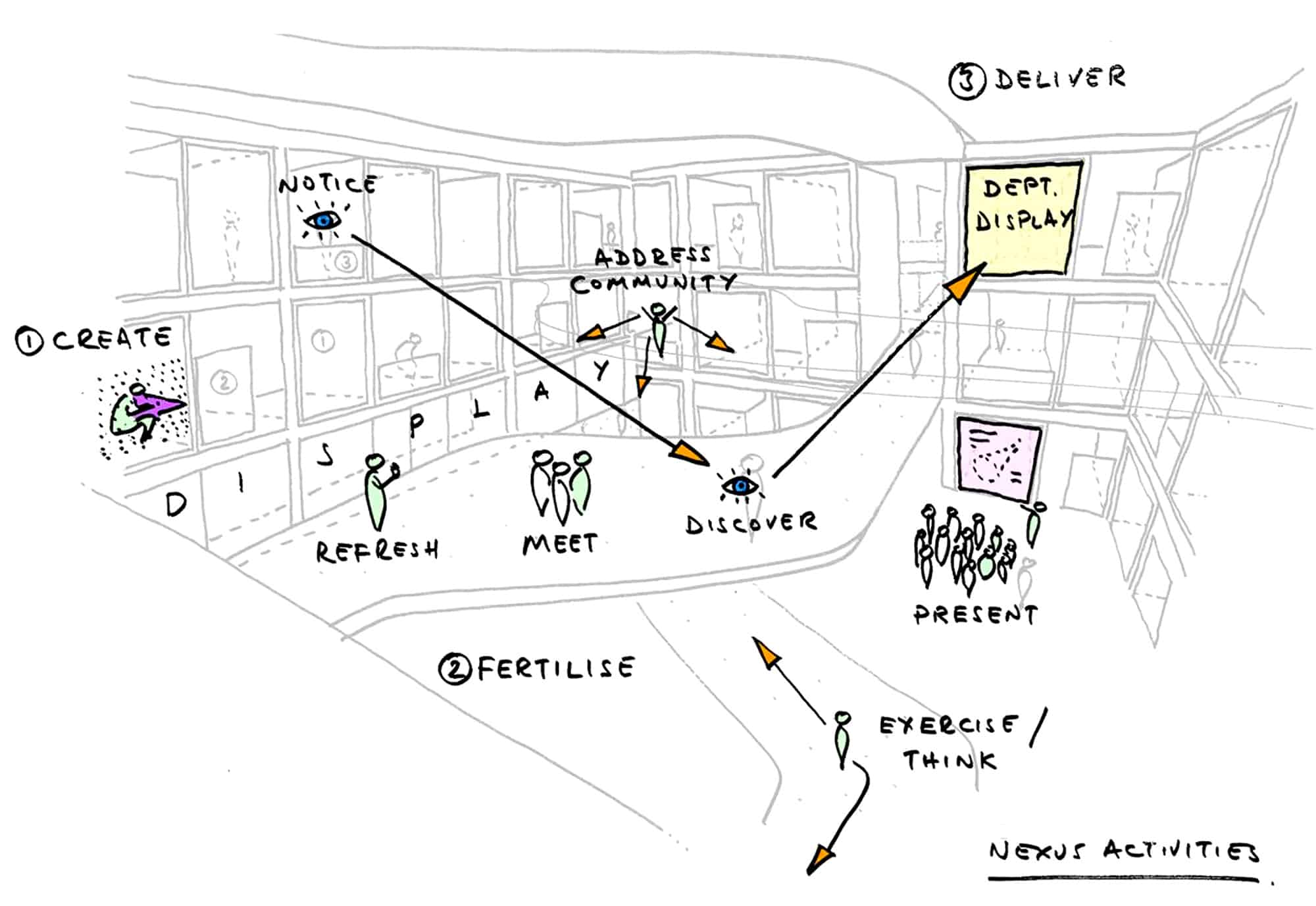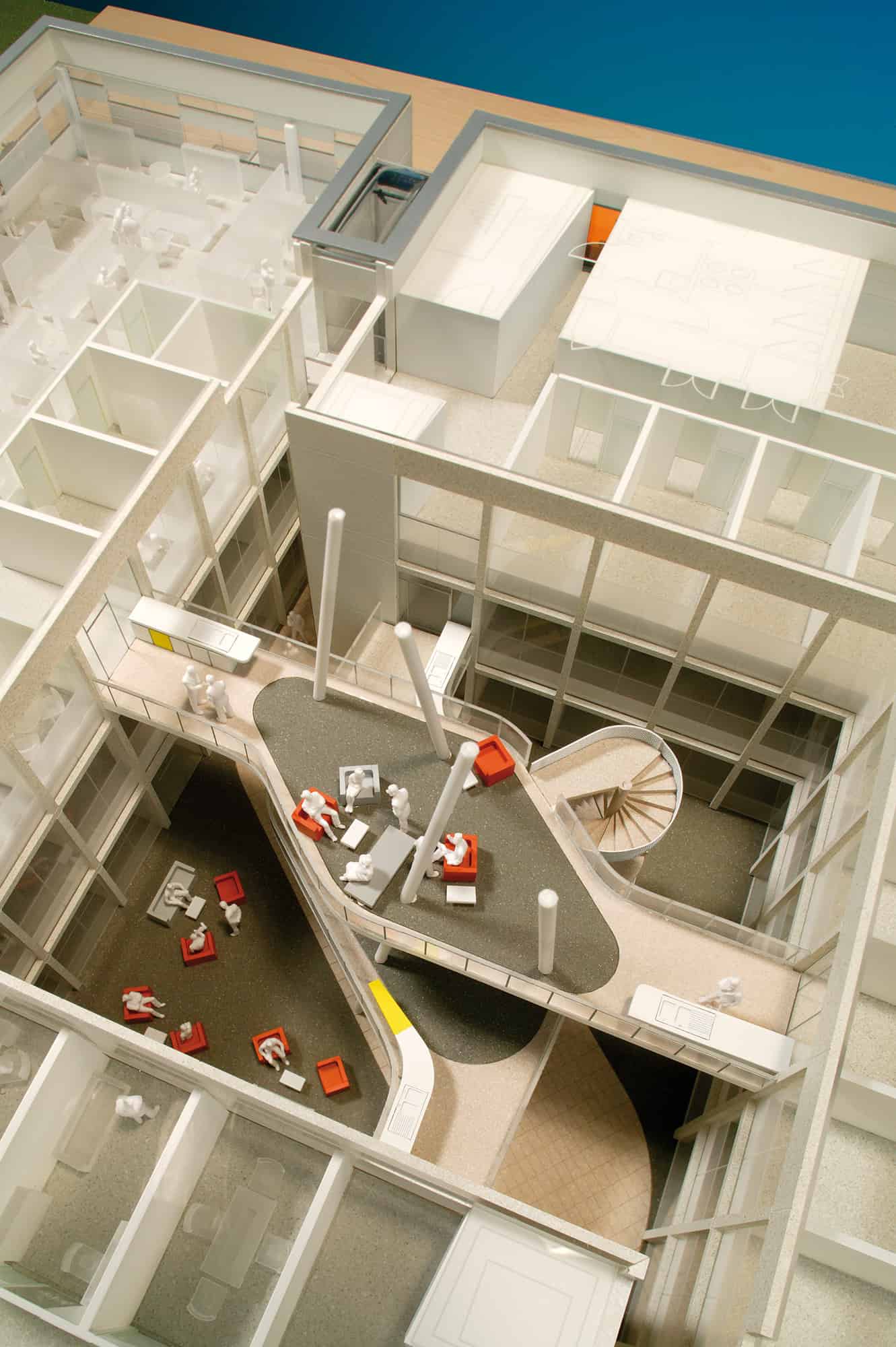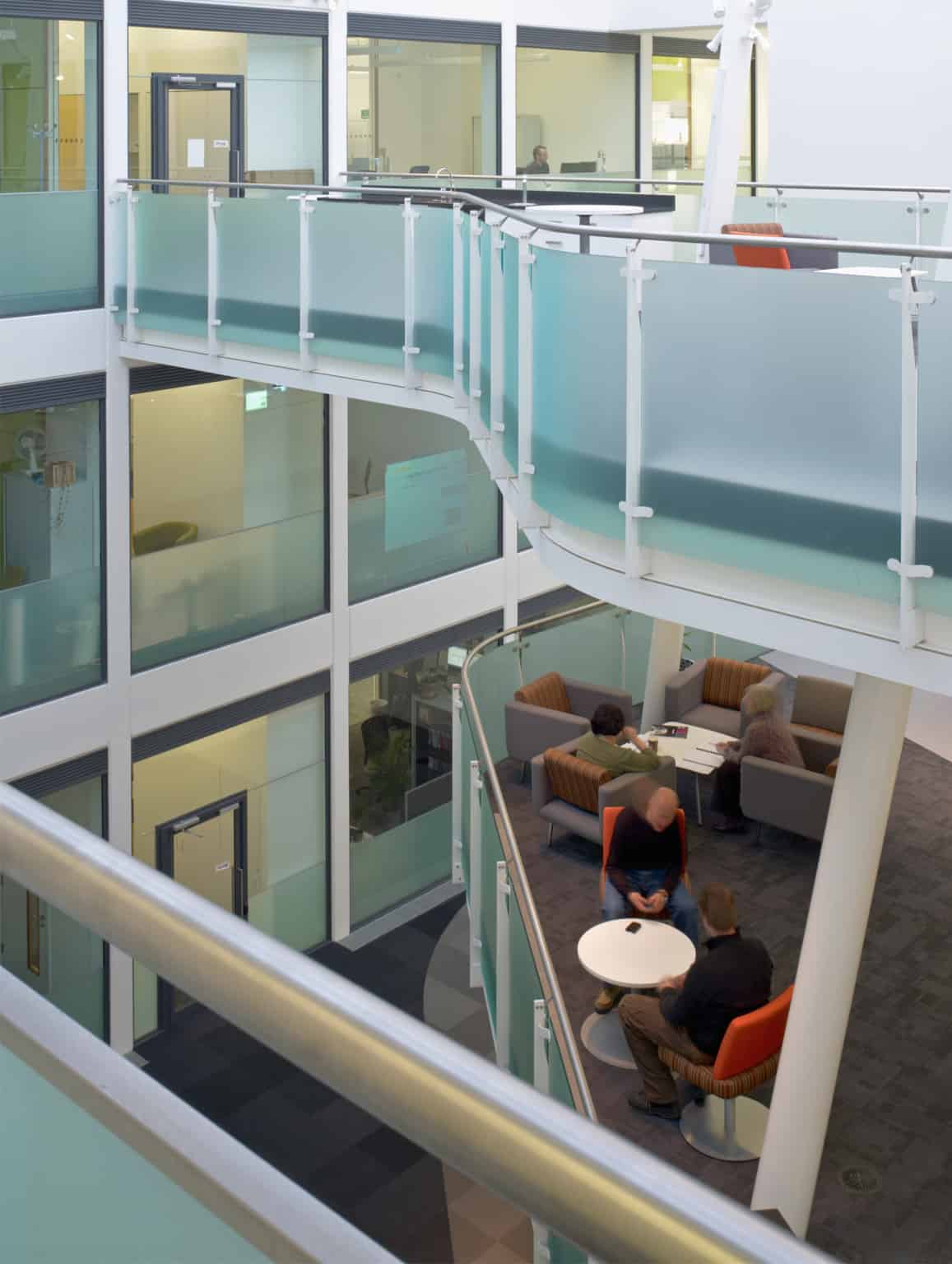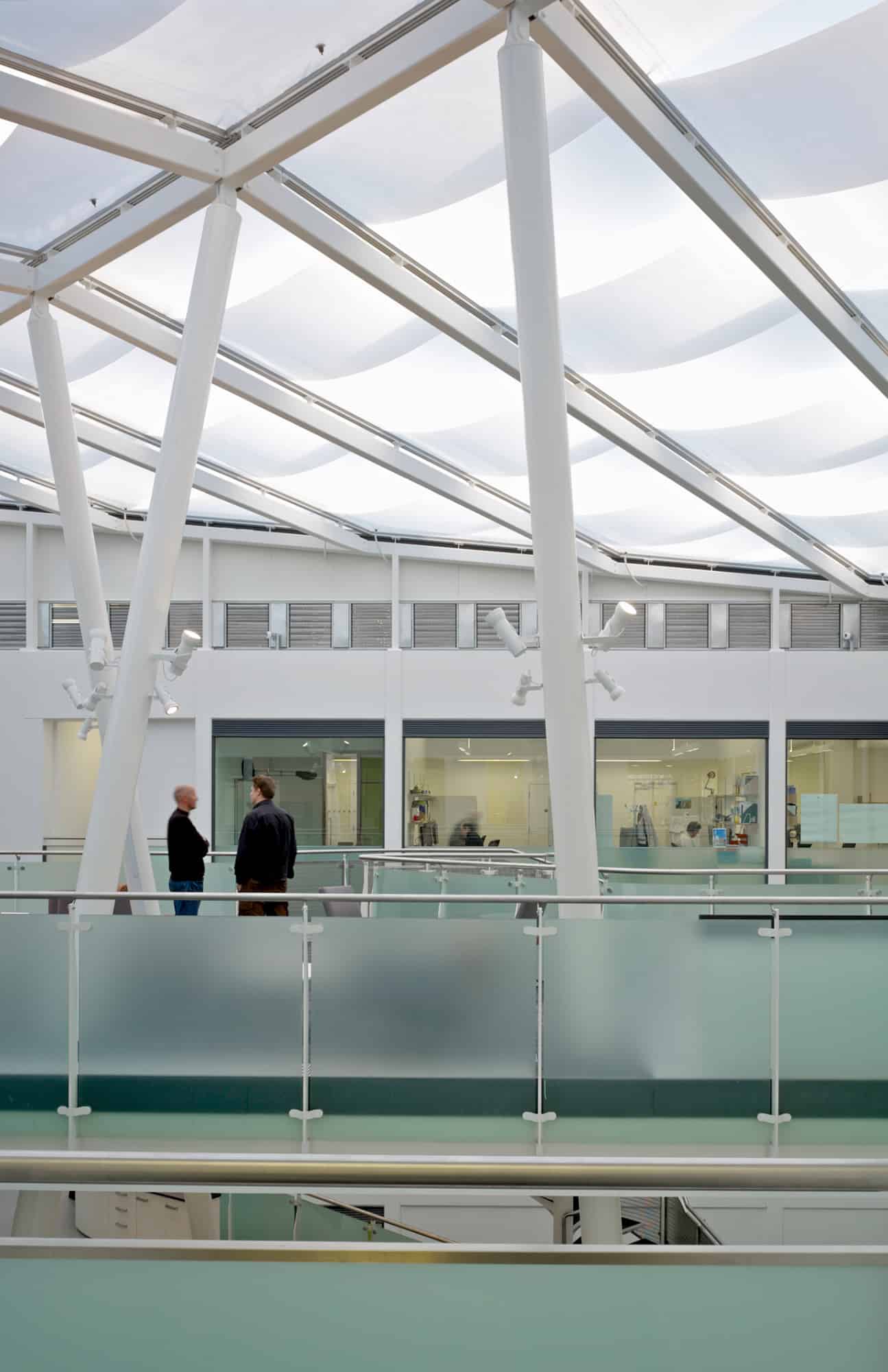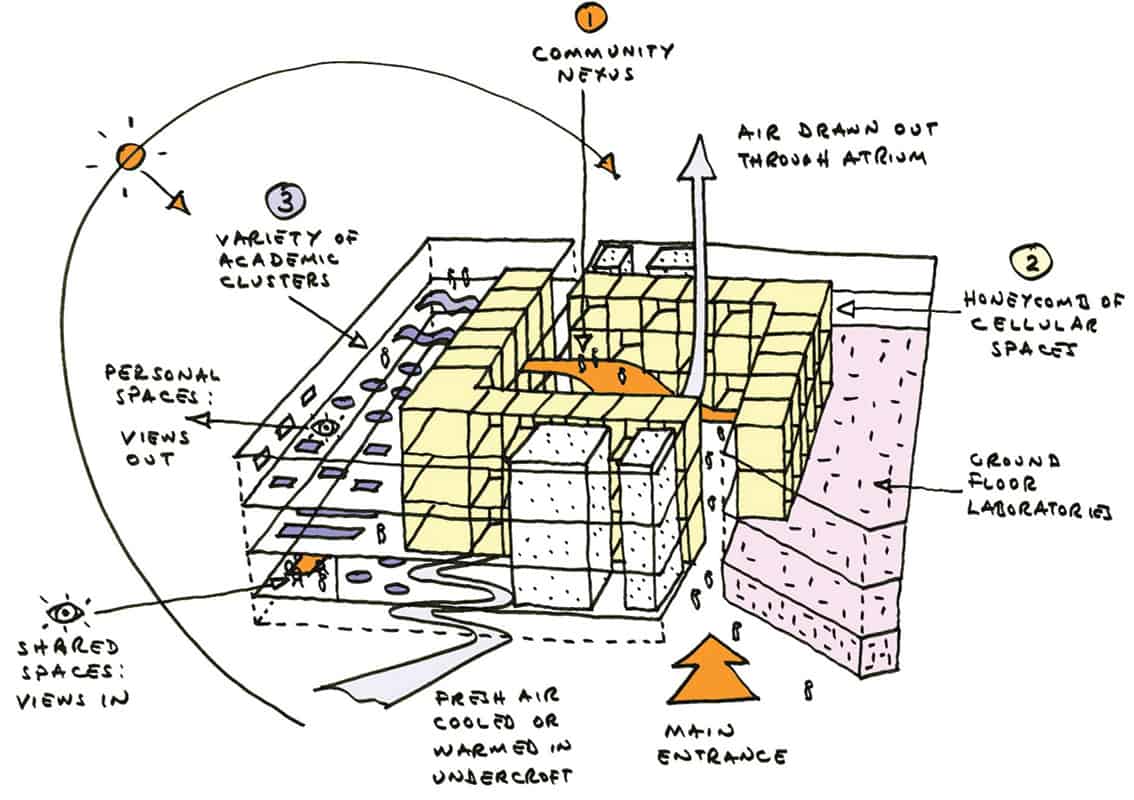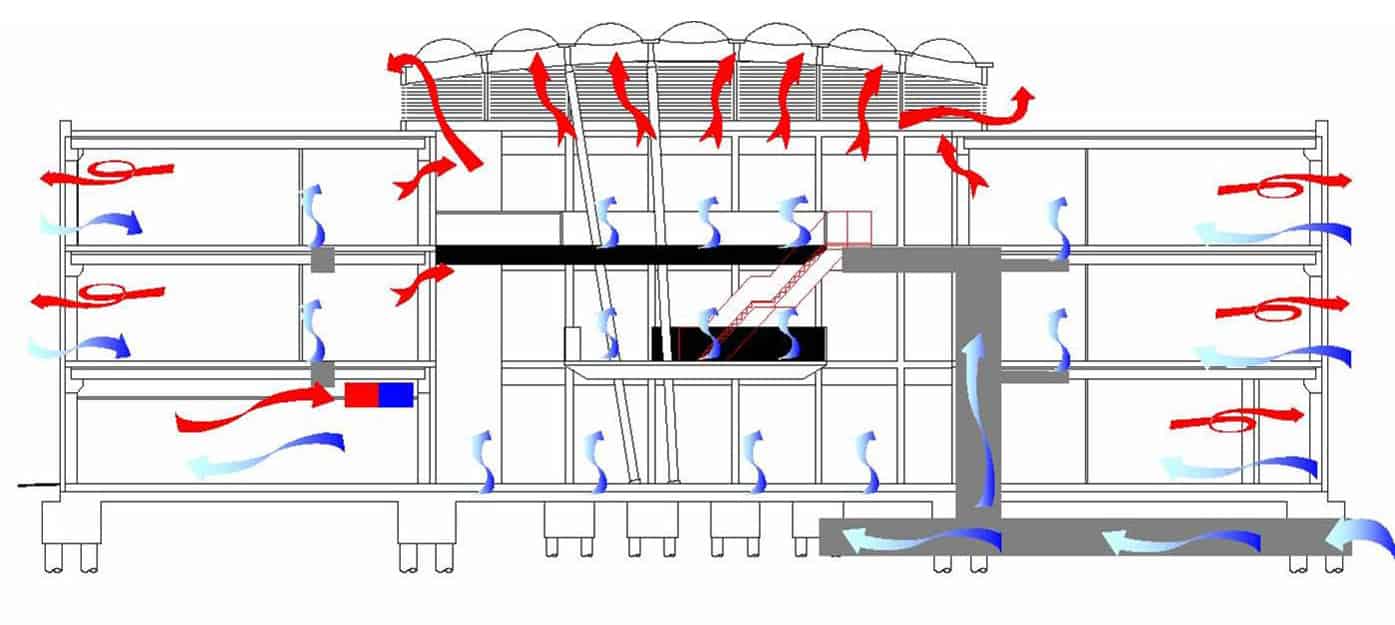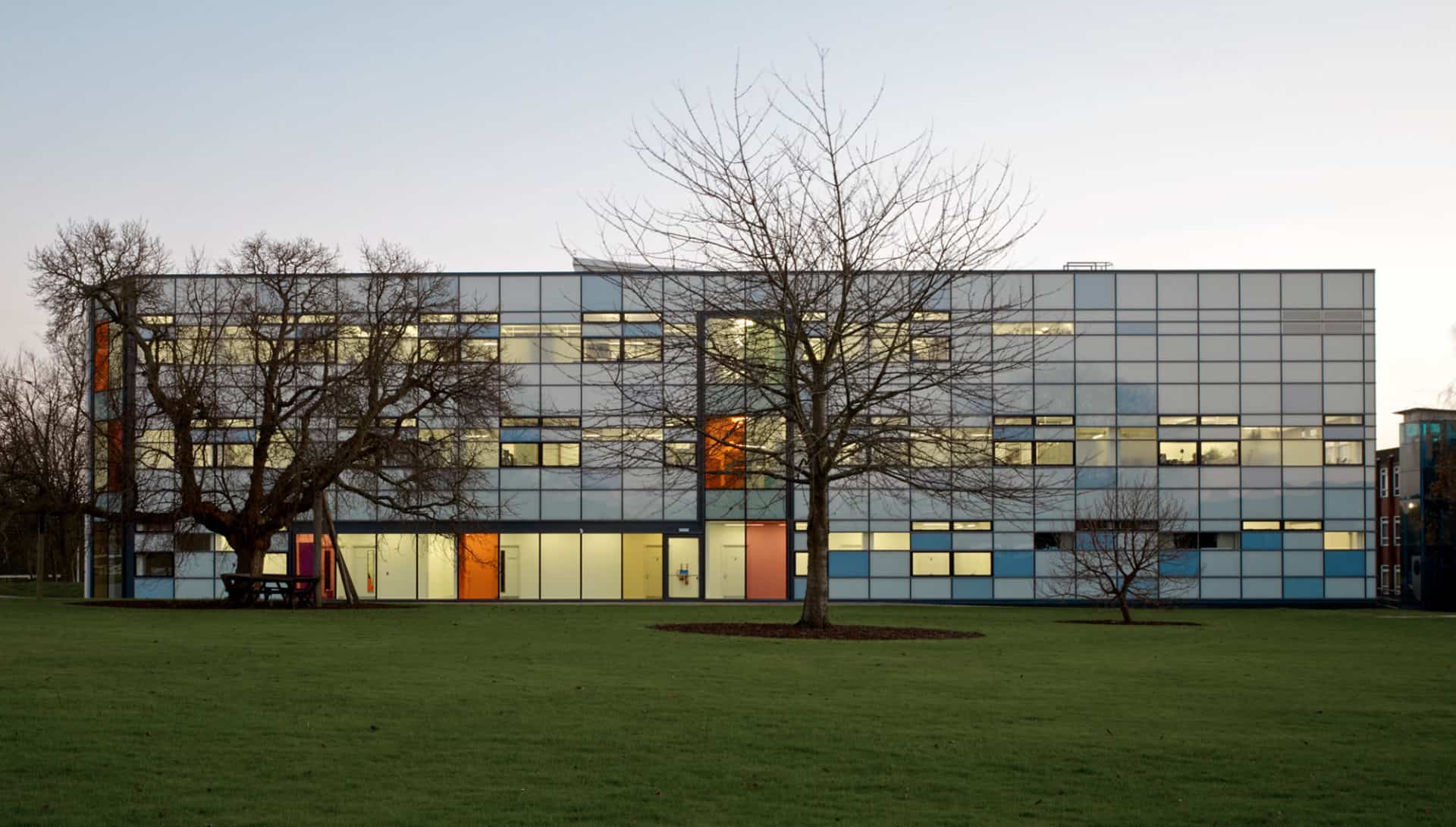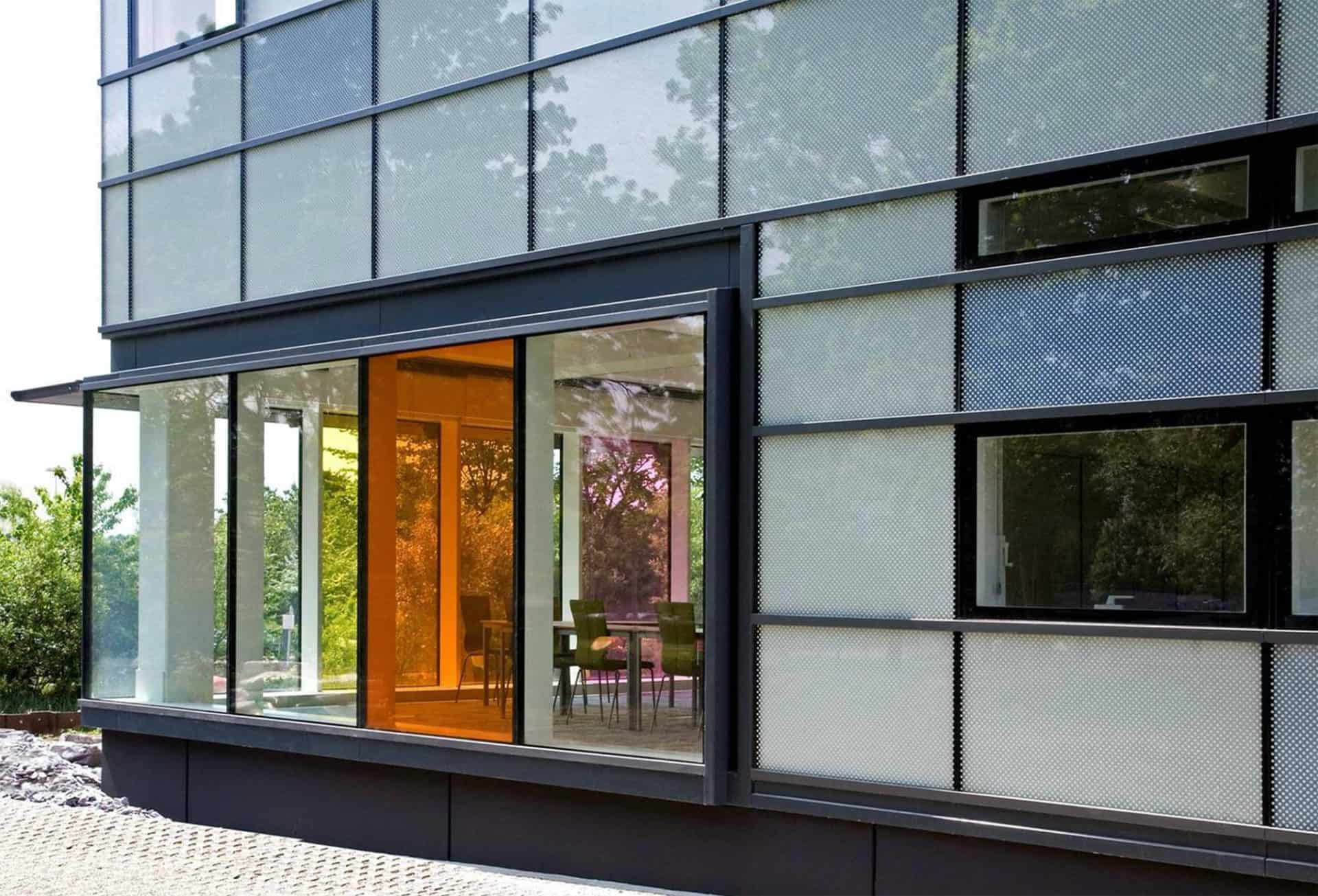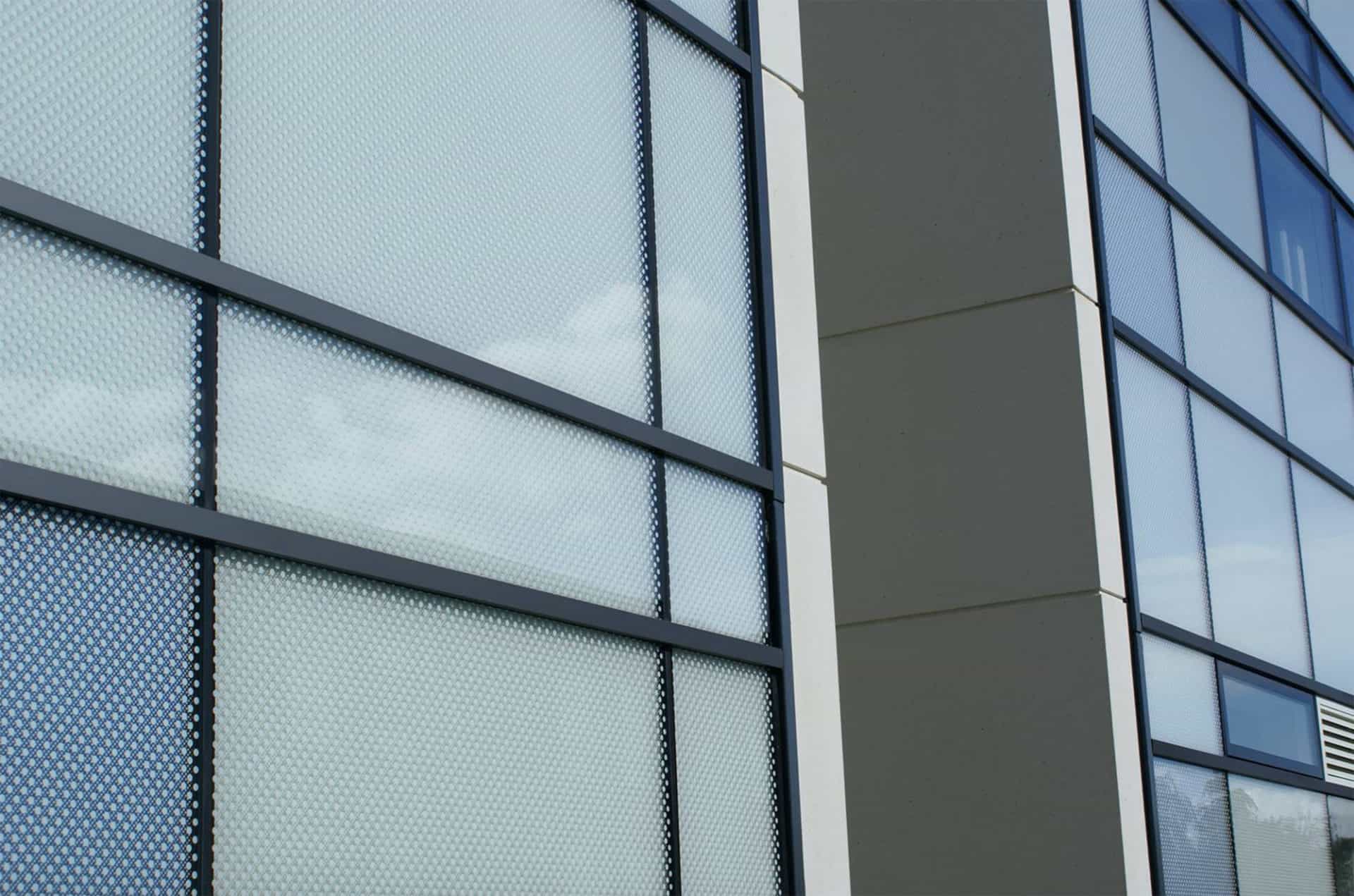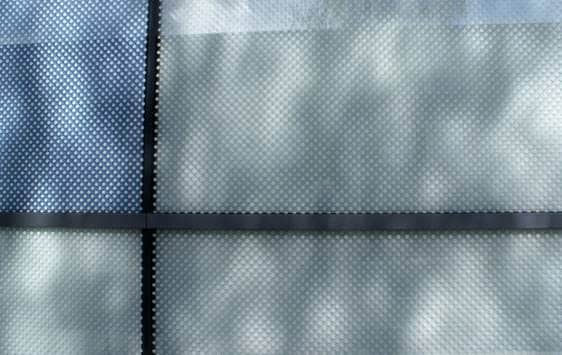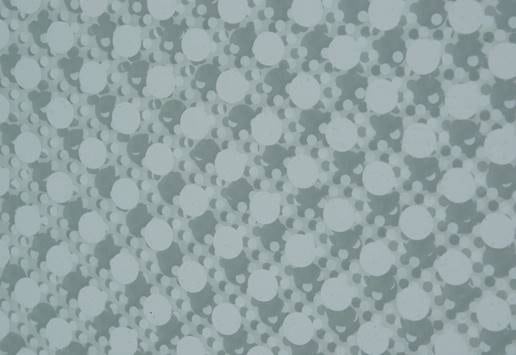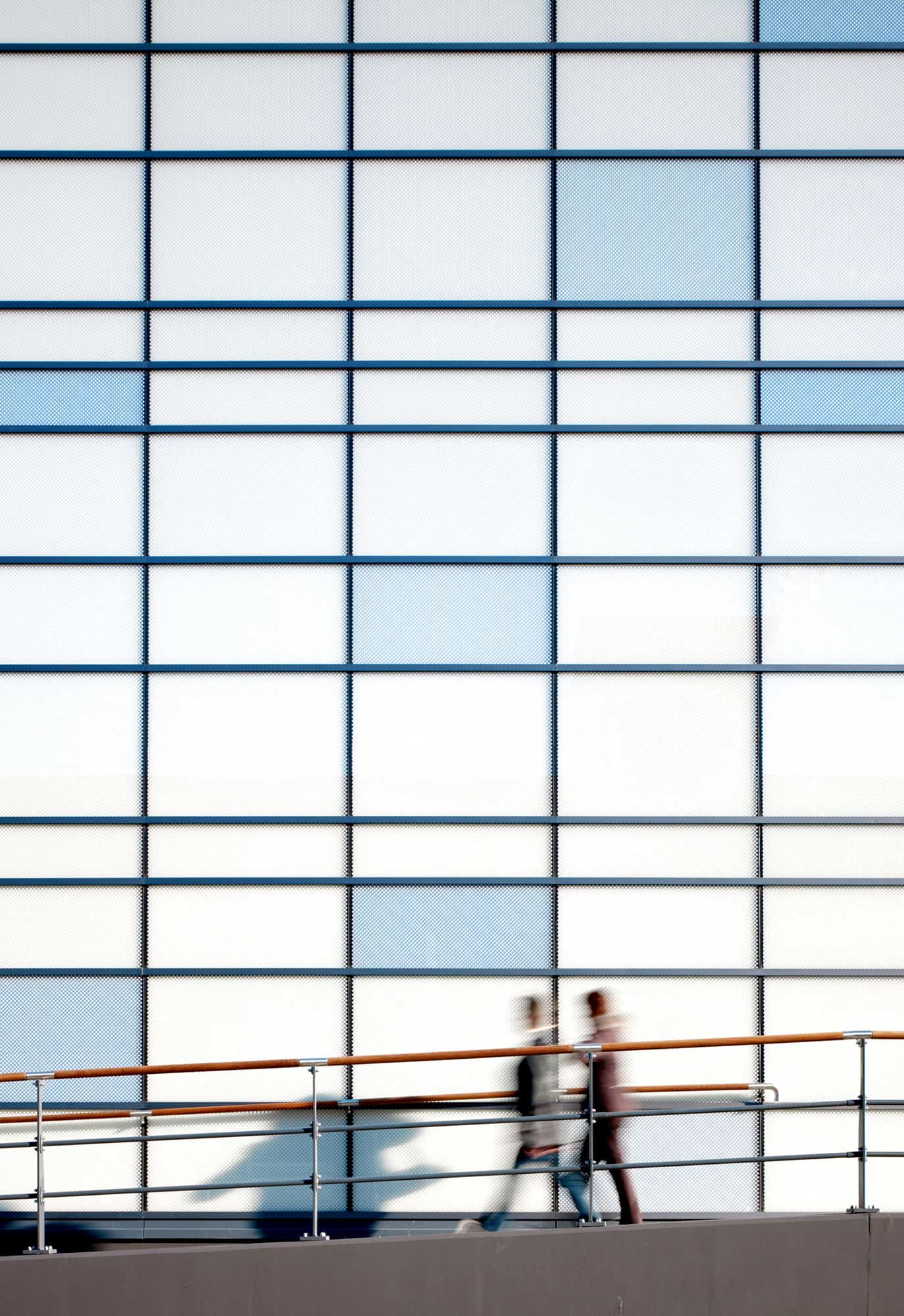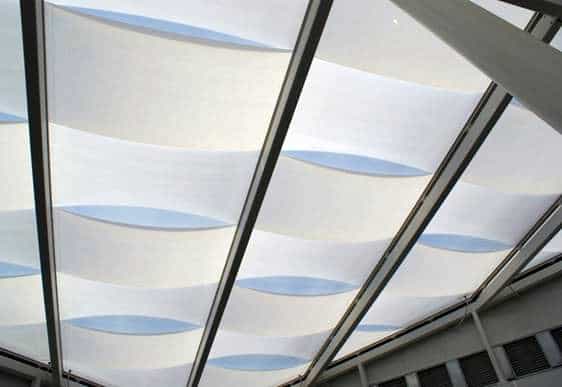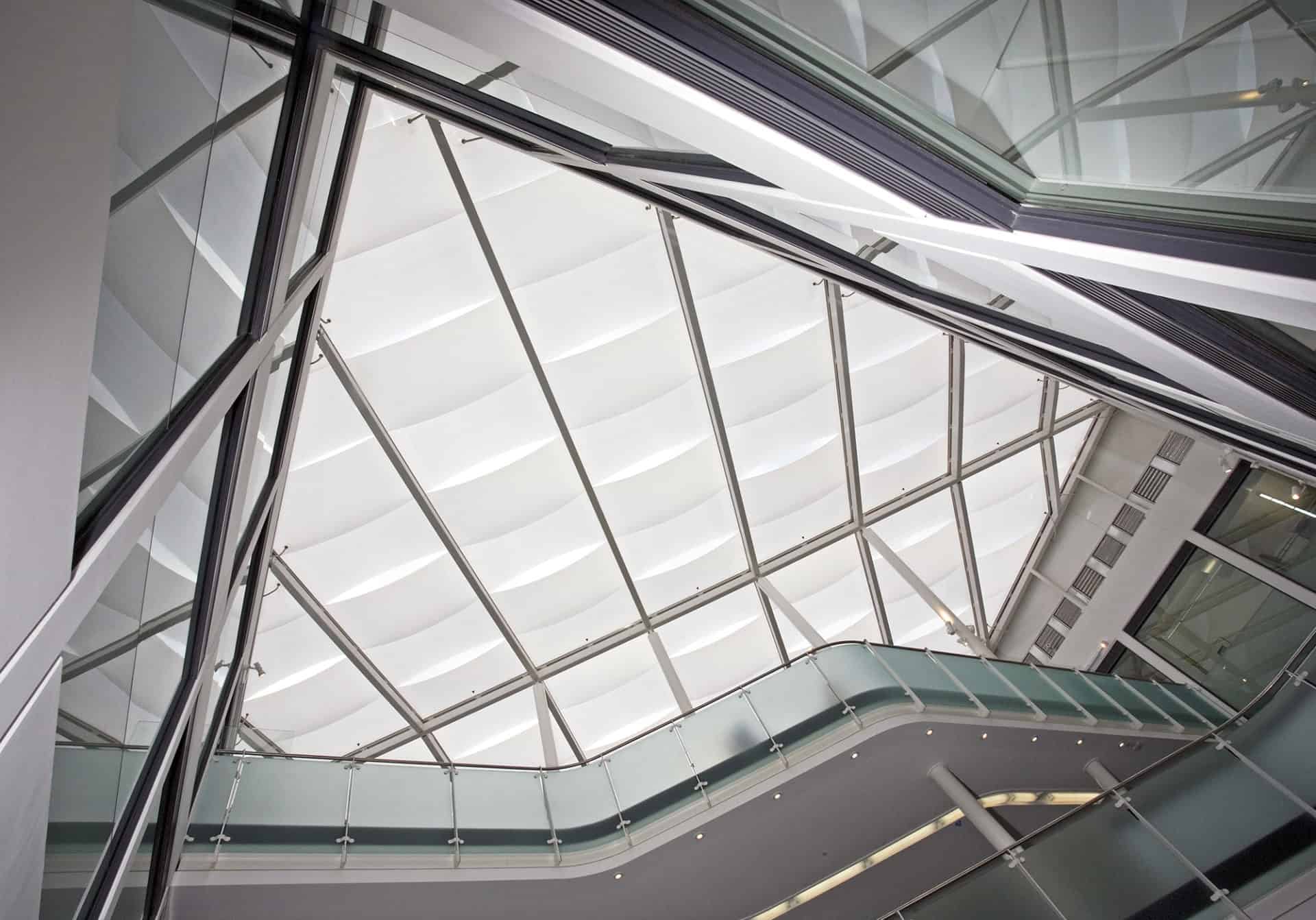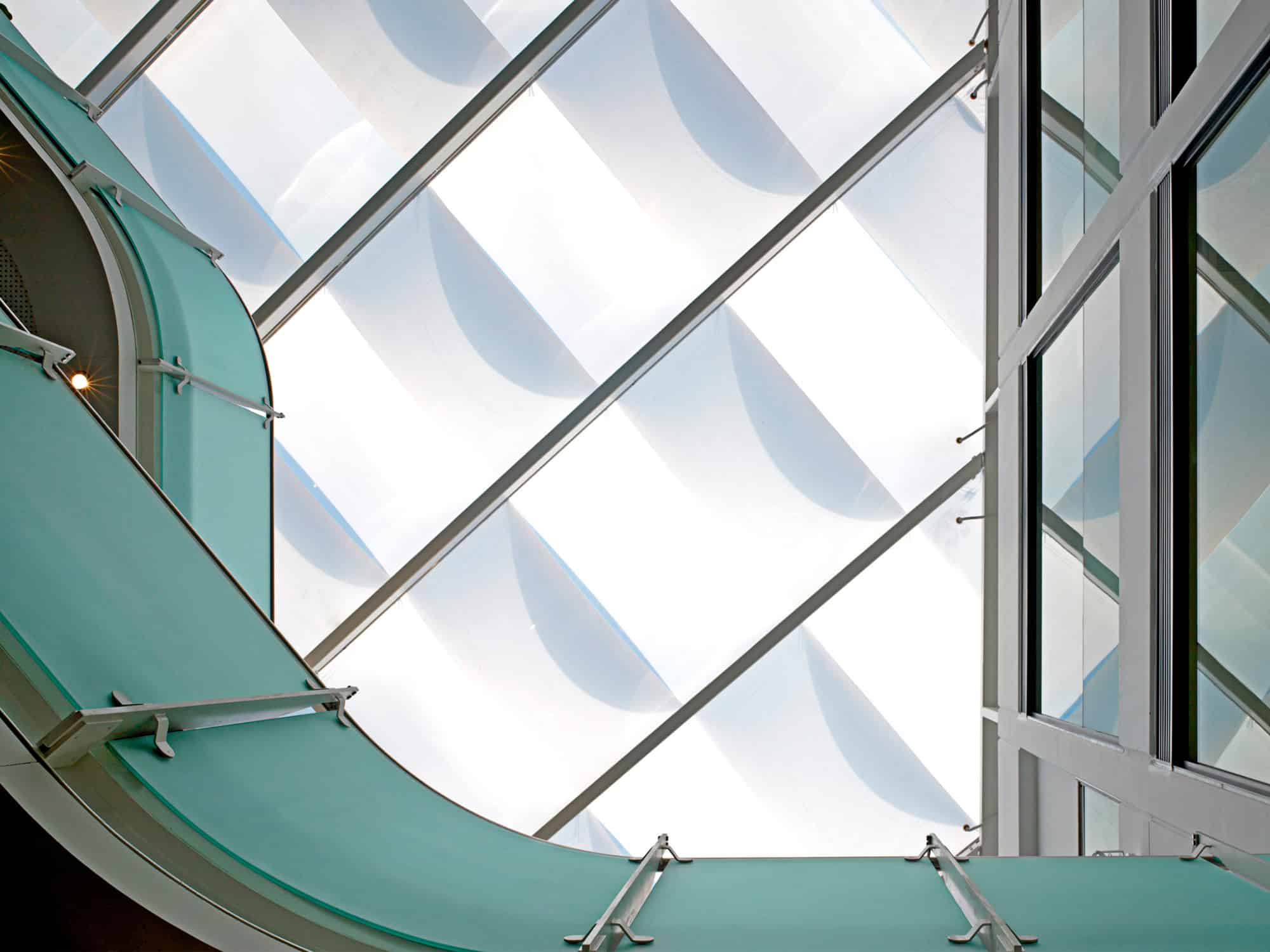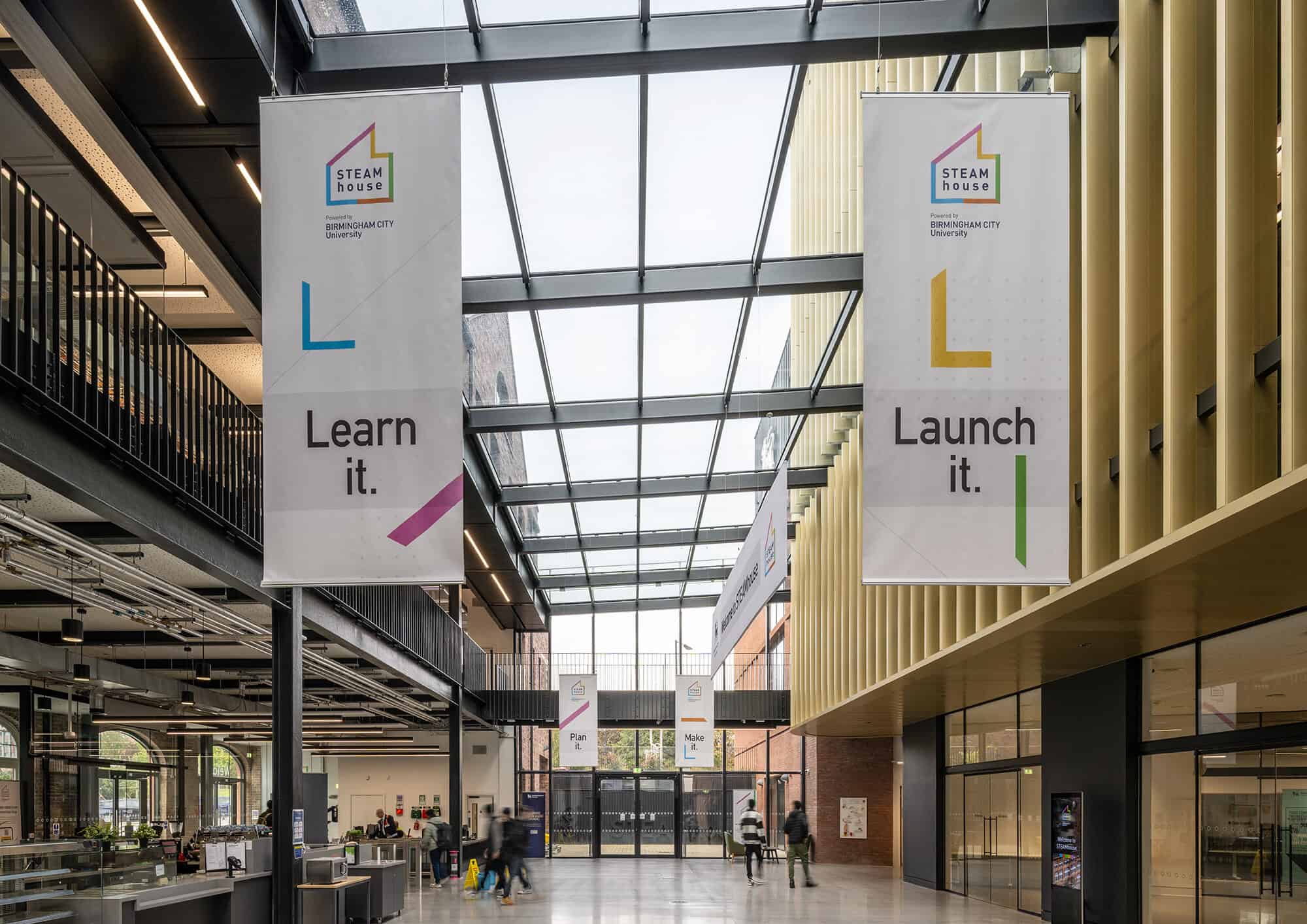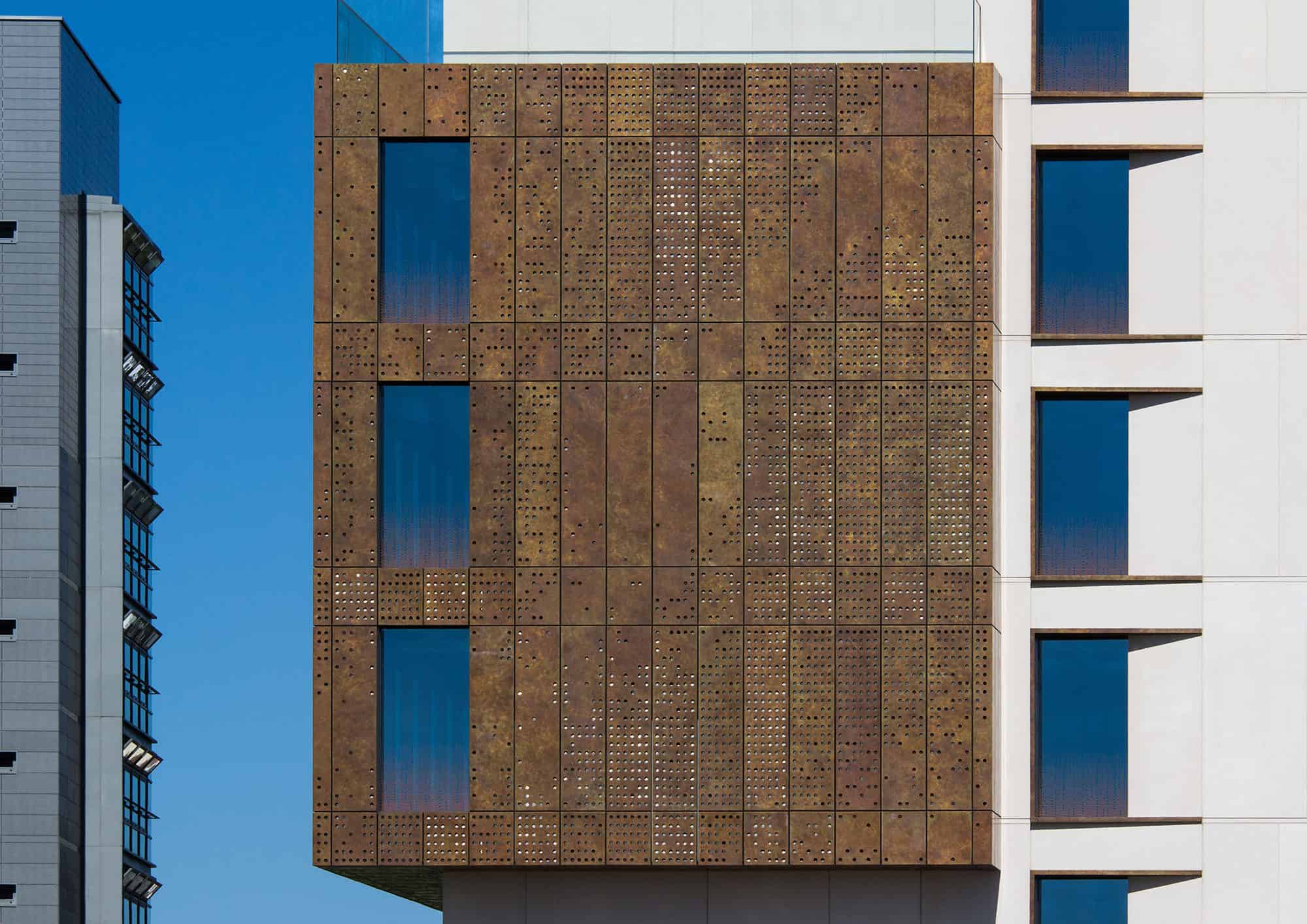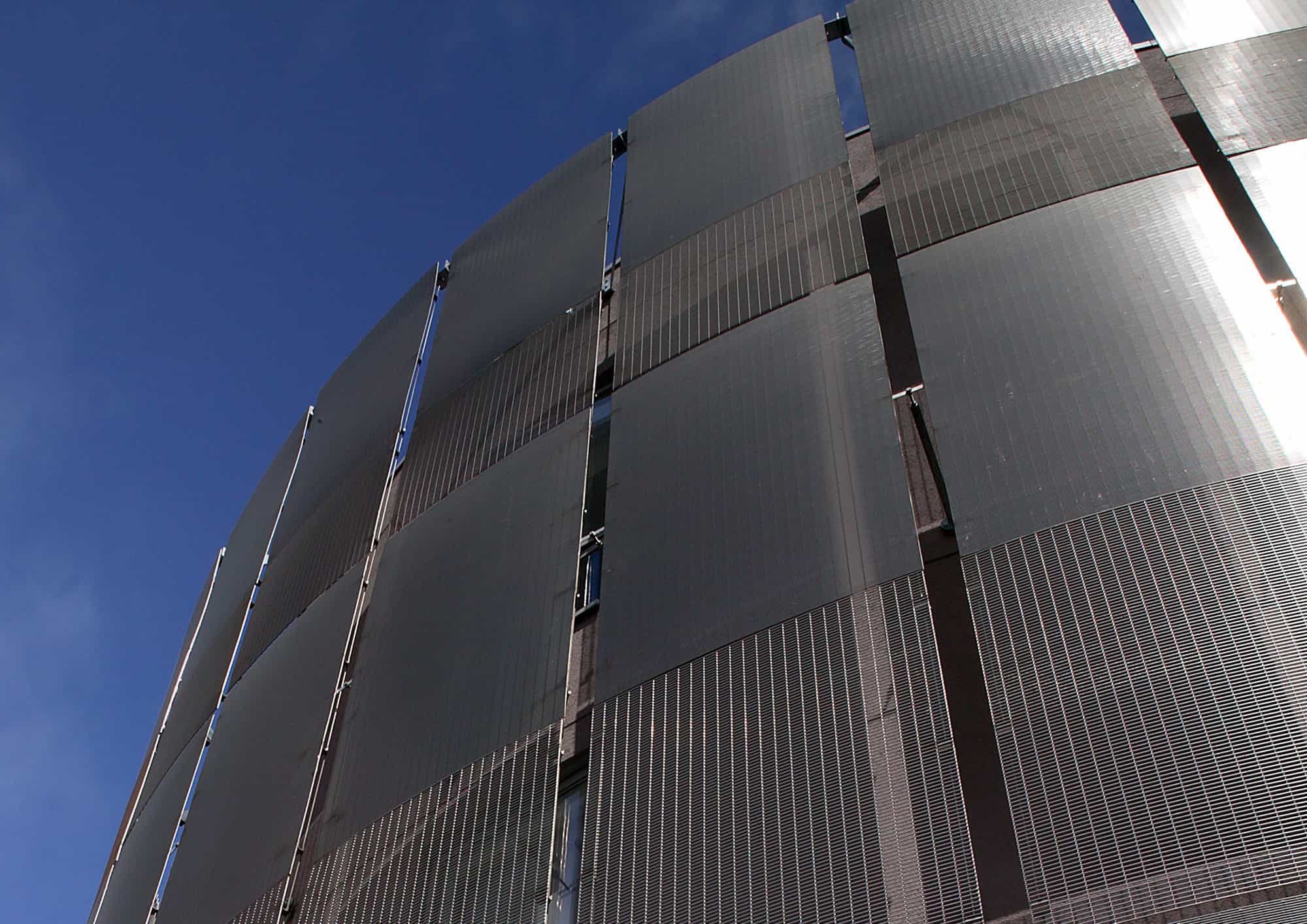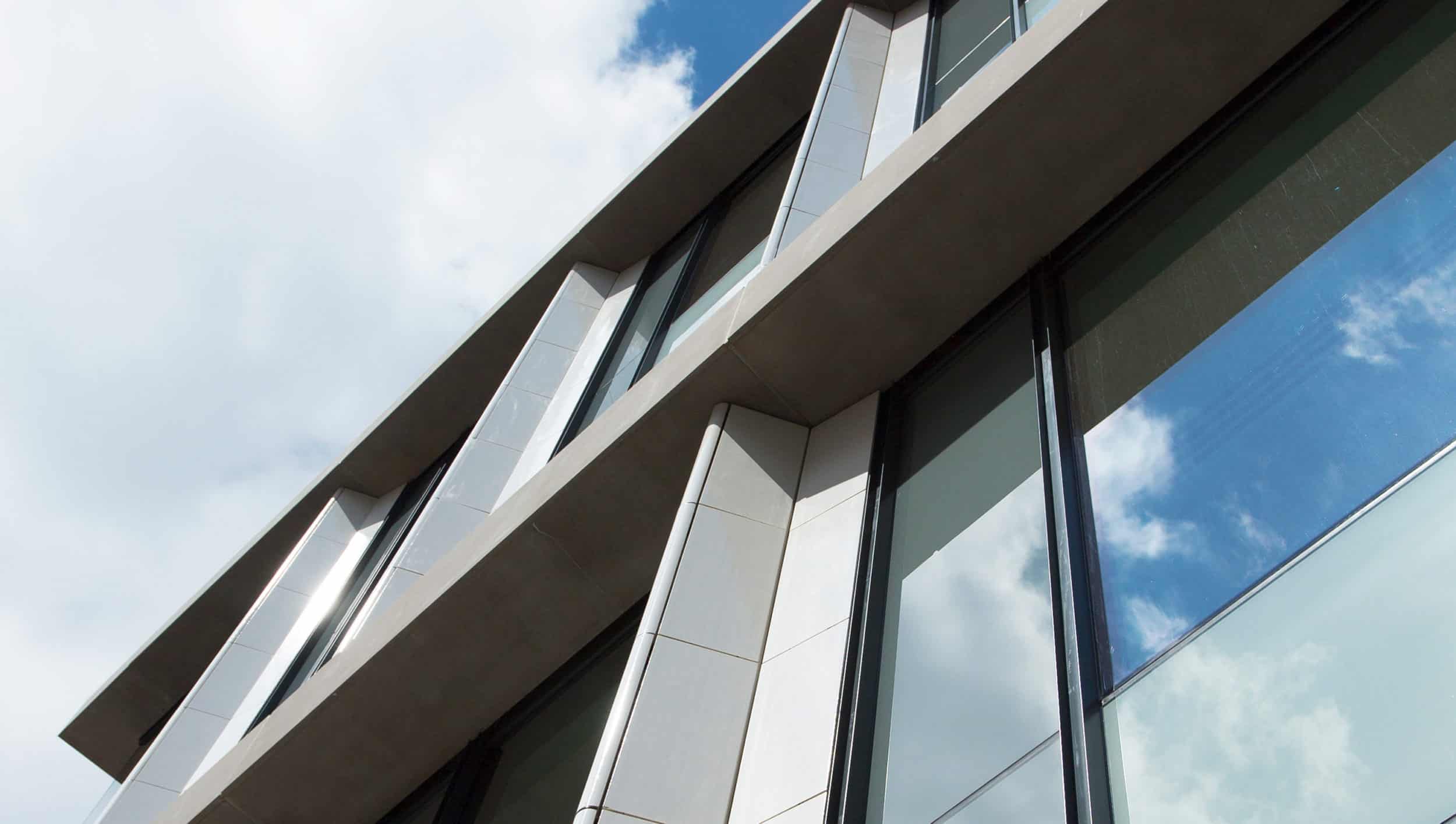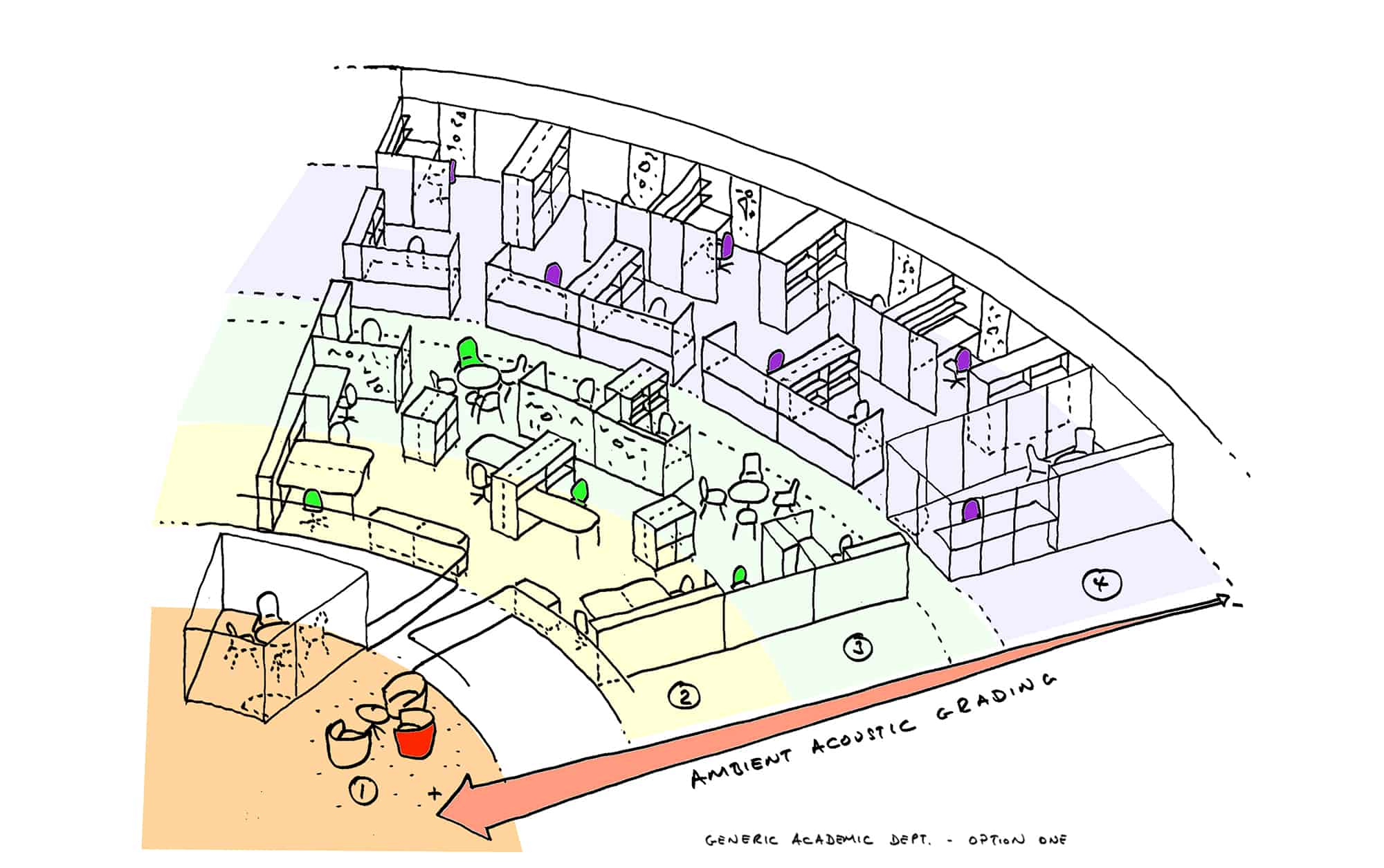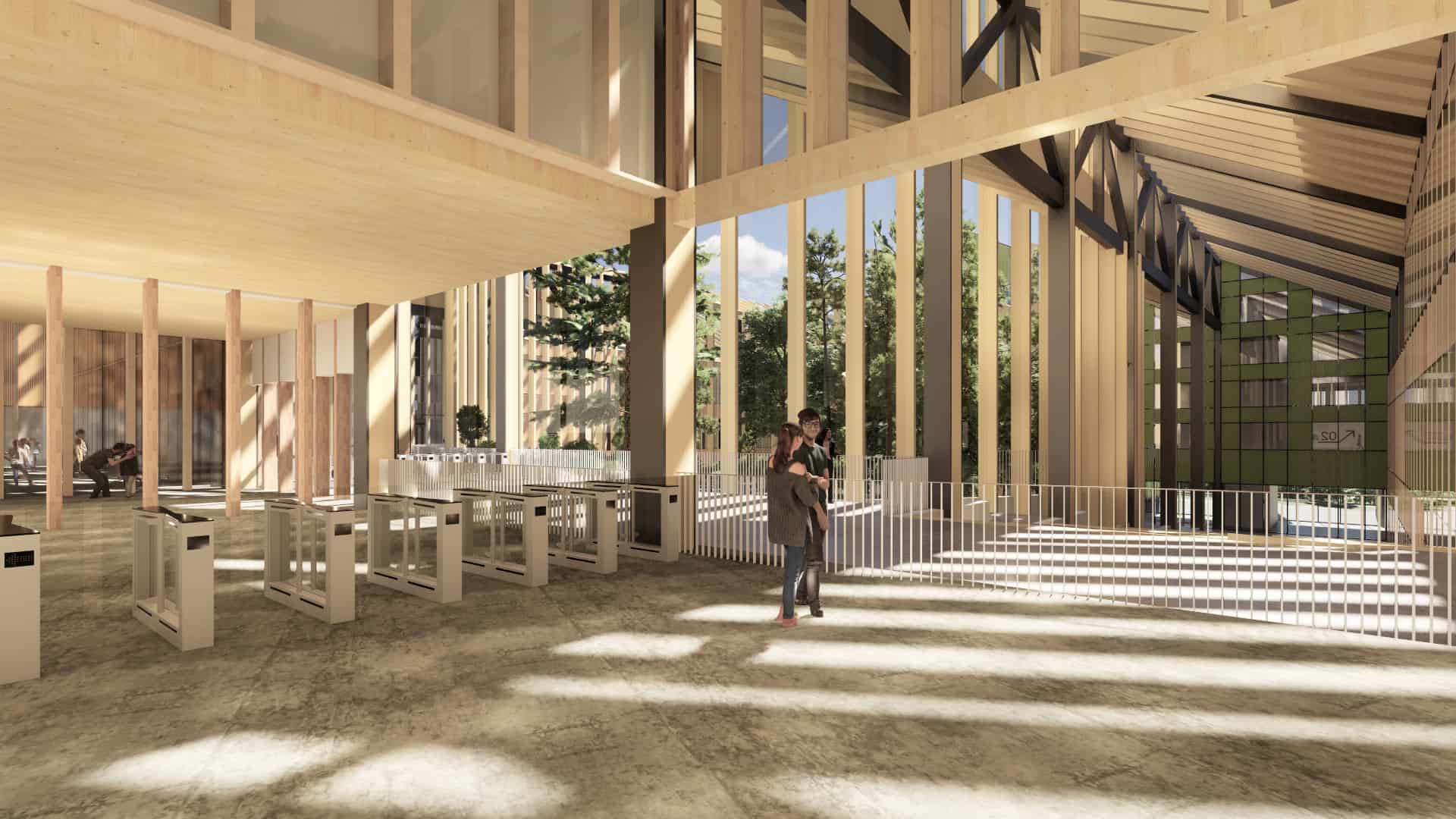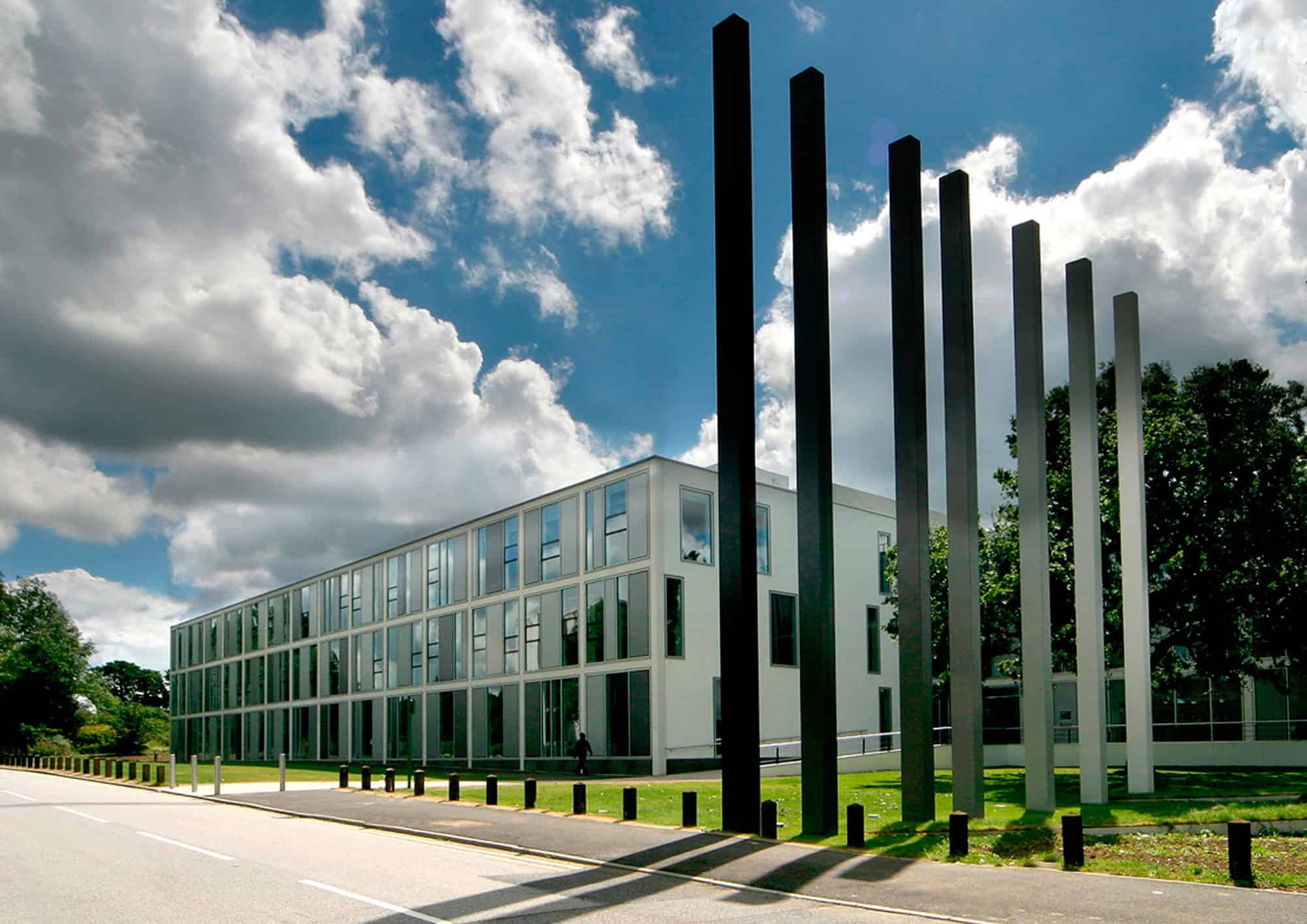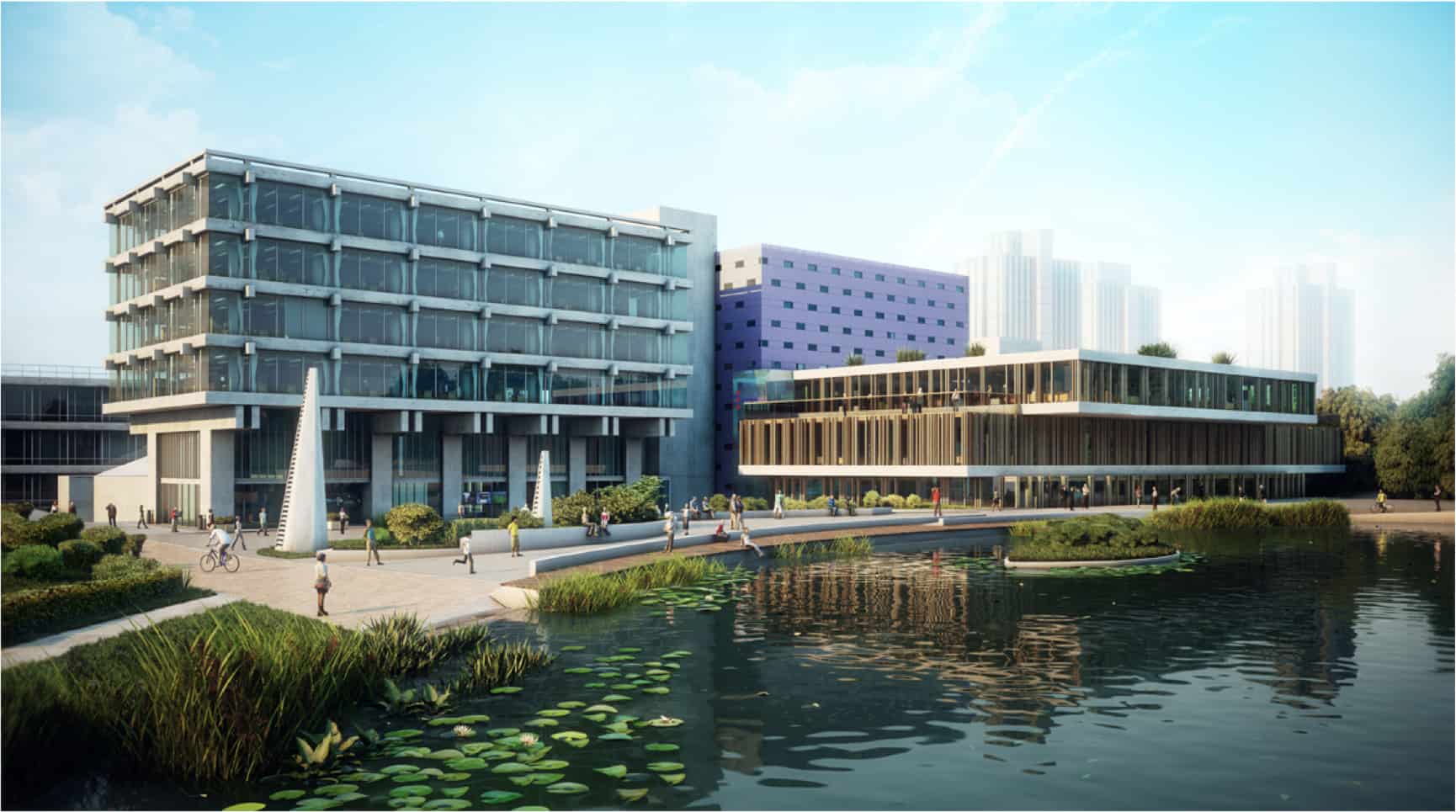Milton Keynes, UK
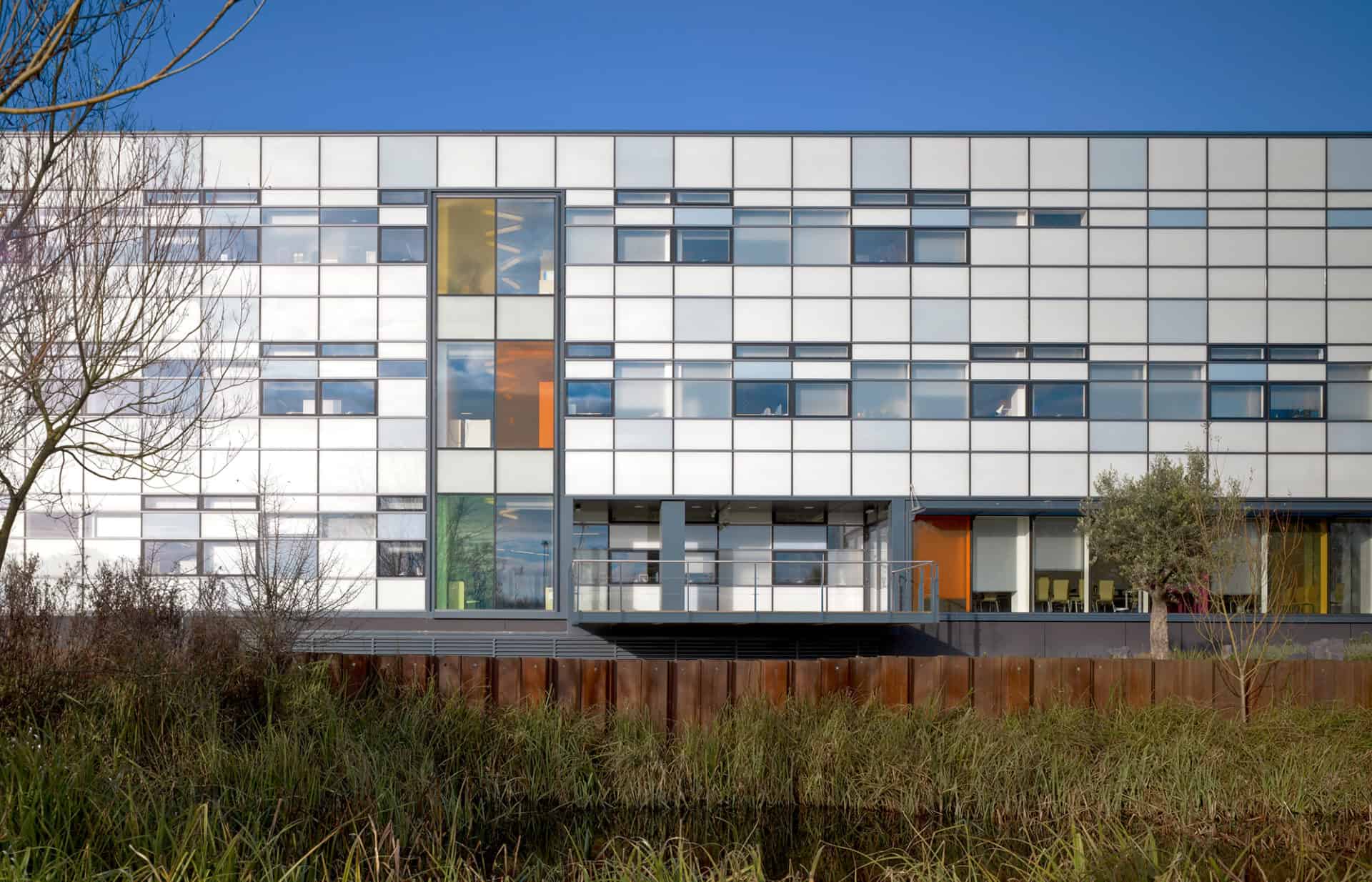
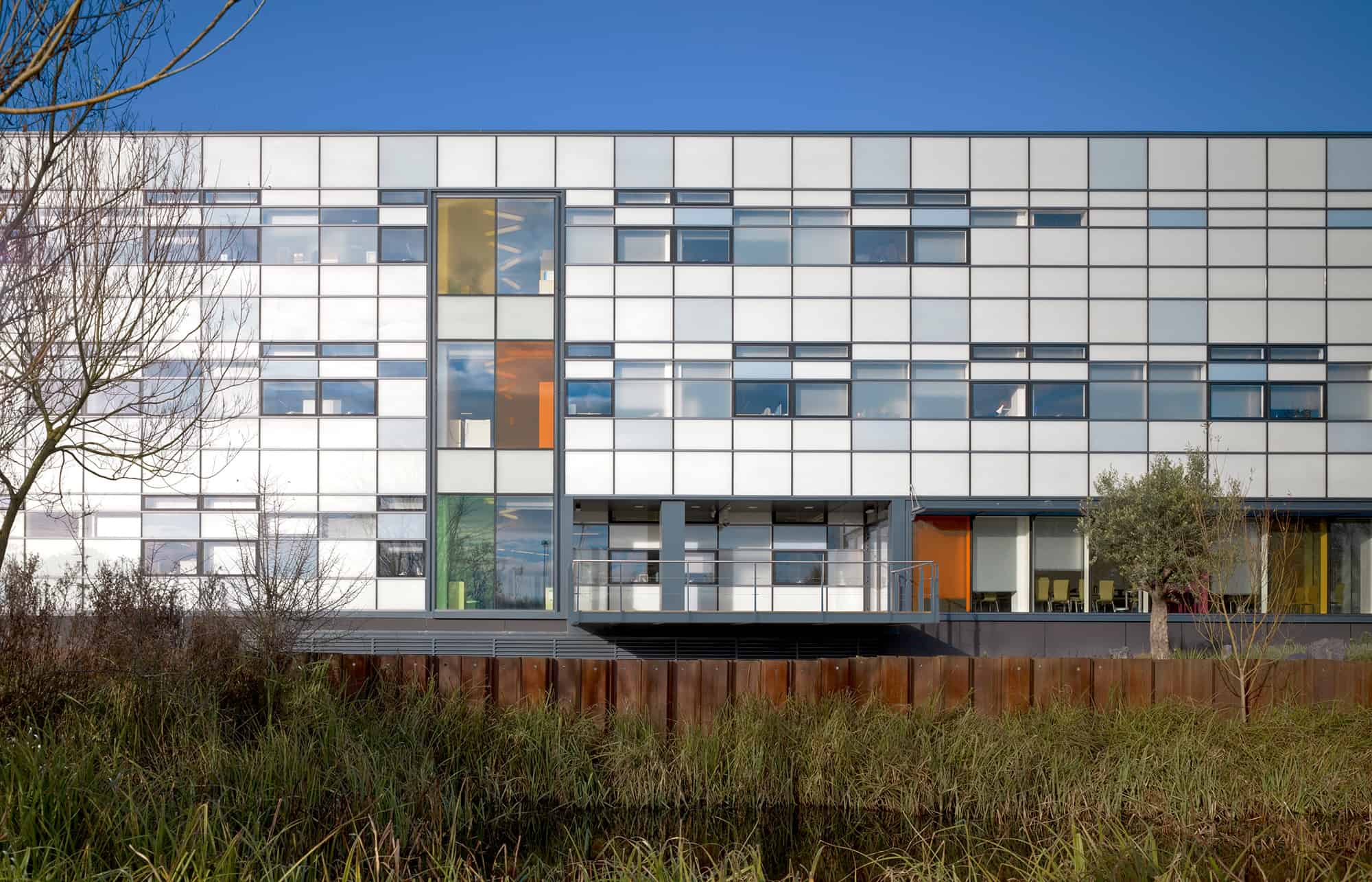
Won in competition, this landmark building on the Open University Campus encourages the natural interaction of researchers and ideas for The Faculty of Computing and The Institute of Educational Technology
Project Details
Collective Team
The focus for the 5,000sqm building is to promote research into Ambient and Ubiquitous Technology. The users, the Faculty of Computing and the Institute of Educational Technology, sought to encourage academic interaction inspiring an atrium linked by bridges to support serendipitous encounters.
Our brief was to design a landmark building, defined as something that could have a strong campus identity and which would be recognised for the research and work that is carried on inside, but avoiding an iconic tag.
The Nexus is the social and academic heart of the building. A consortium partnering approach was adopted for the project that worked like a community for stakeholder engagement and leadership. Our design strategy followed intensive analysis of both university aspirations and use patterns in the department.
The building enables flexible layouts and supports adaptable research, both in the designated lab areas and general workspaces. Floor spans are column free with exposed concrete ceilings to enable flexible layouts and support adaptable research activities.
A honeycomb of cellular spaces around the atrium, and open workspaces around the perimeter allows a democracy of space that reverses traditional hierarchies and allows teams to adopt a variety of traditional and experimental working processes.
Tea points, recycling and photocopying stations are located on and around the bridges to support the strategy of ideas fertilisation through chance encounters.
The building is arranged in plan and section to maximise passive cooling and ventilation opportunities. The plan layout allows the open spaces in the Department Clusters to employ single sided natural ventilation.
The design incorporates a predominantly passive concrete undercroft cooling system integrated into the foundations that provides fresh air to the enclosed honeycomb spaces and the atrium, enhanced by the natural stack effect created from the ground floor to the ventilated skylight.
These measures reduce the need for plant equipment and therefore energy use, CO2 emissions and capital costs. The structural frame and floor slabs are of precast concrete, the majority of which is exposed to employ its thermal mass for night time cooling.
The façade consists of 35% clear or translucent glazed openings avoiding the need for external solar protection except for a large meeting room on the south.
The primary façade surface is punctuated by large clear panels of glass, some coloured, that appear only where the internal interactive, or Nexus, activities spread from the atrium to the perimeter facade. These spaces are the main entrance, Nexus bridge extensions and primary meeting spaces, opening up these social and group activities to the campus.
The colours contrast the soft white areas by day and highlight their larger scale when backlit after dark.
The glass has the added role of reflecting its campus environment including some grand and ancient tree clusters on three sides, adding to the gentle composition of each facade.
The envelope echoes the ephemeral ideas of Ambient Technology with a soft white appearance from a distance that reveals, on approaching it, a fine grain of texture through a series of glass layers containing dot frits and colours. A real depth is created through the shadows of dots cast from outer to inner panels.
The Open University’s brand colours use a white background and a number of blues, which are incorporated into the deeper layers of the glass. A combination of opening and fixed clear windows provide daylight and fresh air whilst not exceeding maximum exposure limits against solar gain and therefore avoiding the need for any external shading devices.
The atrium roof is like a folded piece of paper in simple form but made up of translucent ETFE air cushions within a steel frame, allowing ambient daylight to pervade the atrium and the spaces in the Honeycomb.
The cushions are very lightweight which reduce structural loads and also provide protection from solar gain through a combination of white translucent panels and dot matrix frits.
The white panels are alternately on the top side and underside of the air cushions which creates the effect of woven white strips through the steel rafters.
